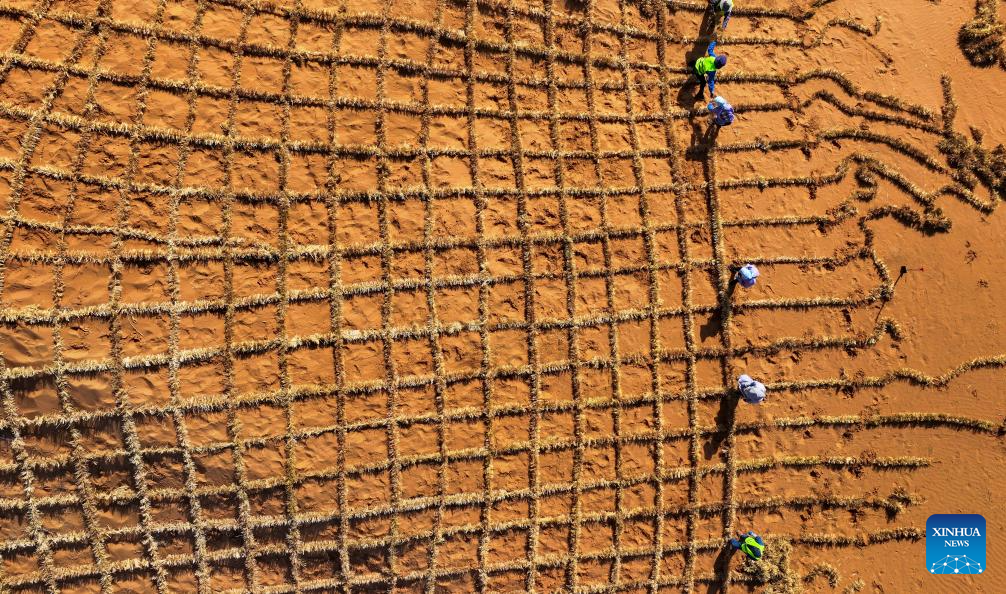
China will share with the world its experience in sand control over the past 50 years during the 16th session of the Conference of the Parties of the United Nations Convention to Combat Desertification, which opened in Riyadh, Saudi Arabia, on Monday.
Guan Zhi'ou, head of the Chinese delegation to COP16 and director of the National Forestry and Grassland Administration, said that China's remarkable achievements in controlling desertification have garnered global attention.
ALSO READ: Afforestation efforts bear fruit in Taklimakan Desert
"China has achieved a 'double reduction' in desertification and sandy land, becoming the first country in the world to achieve the goal of zero net growth in land degradation," he said.

An exhibition showcasing the history and achievements of the Three-North Shelterbelt Program — one of the most important projects in China's sand control history — opened on Monday at the China Pavilion at the COP16 venue.
The pavilion, covering 608 square meters, will host a series of activities until Dec 13, the last day of the conference.
READ MORE: China's resolve to remain firm in fighting desertification
China joined the UN convention on desertification in 1994 as one of its first signatories. Sixteen years before that, it launched the Three-North program, which has built a "green Great Wall" in 13 provincial-level regions, spanning 4 million square kilometers in northern China.
Over the past 46 years, the forest coverage rate in the project area has increased from just over 5 percent to nearly 14 percent, Guan said, noting that China now has the largest area of planted forests in the world and is the largest contributor to global greening.

Andrea Meza Murillo, deputy executive secretary of the UNCCD, said, "I was really moved when I saw the images of different generations of Chinese people fighting the desertification."
Good leadership, good policies, the engagement of society and governments, traditional knowledge, and technology and innovation are among things the world can learn from China's experience, she said.
READ MORE: Saudi official commends Beijing's green efforts
"China's process is really a good step to demonstrate that we can have development with sustainability. This green development is possible," she added.
According to Guan, one of the secrets behind China's sand control success is the country's adherence to the philosophy that "mountains, rivers, forests, farmlands, lakes, grasslands and deserts form a community of life", which was proposed by President Xi Jinping.

"The Chinese government attaches great importance to the construction of ecological civilization, integrating it into the overall layout of the socialist cause with Chinese characteristics, alongside economic, political, cultural and social development. President Xi's thought on ecological civilization has become the fundamental guiding principle for the comprehensive control of desertification in China," Guan said.
Established in 1994, the UNCCD is one of the three major UN treaties — alongside the two on climate change and biodiversity — that are collectively known as the Rio Conventions.
READ MORE: Xi: Green development key to building a beautiful China
According to national reports presented to the UNCCD last year, at least 1.2 billion people and an area of 1.5 billion hectares are affected by land degradation, with an estimated annual increase of 100 million hectares.
During COP16, which is themed "Our Land, Our Future", the main decision-making body of the UNCCD's 197 parties — 196 countries and the European Union — will undertake a midterm evaluation of its 2018-30 strategic framework.
"China will further share technologies, exchange experiences and contribute wisdom and strength to achieve the global goal of zero growth in land degradation by 2030 and the long-term objectives of the G20 Land Initiative, in order to curb land desertification and build a beautiful and habitable global home," Guan said.


